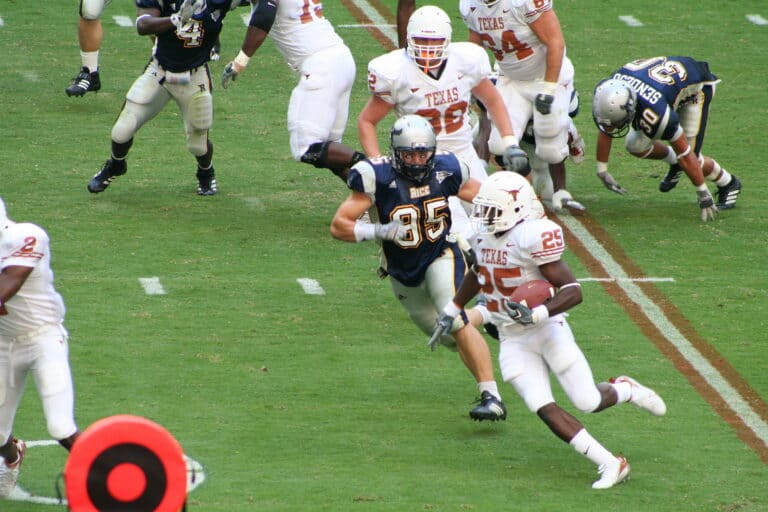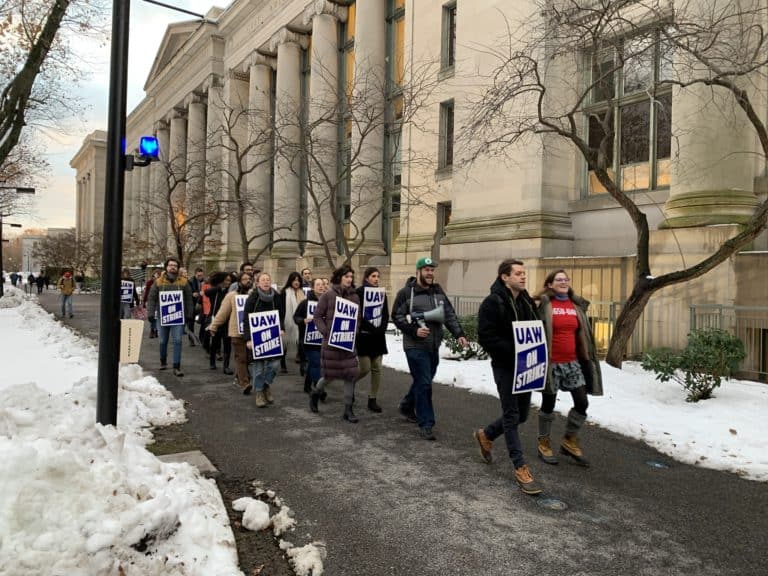
Andrew Strom is a union lawyer based in New York City. He is also an adjunct professor at Brooklyn Law School.
This post is the second in a two-part series.
This is the second of a two-part retrospective on President Obama’s NLRB. The first part addressed how confirmation fights led to three Supreme Court cases and contributed to a change in the filibuster rules. This part will focus on the Board’s substantive record.
The Agency Tries to Become Relevant in Non-Union Workplaces
As the percentage of workers who belong to unions has shrunk, by the time President Obama took office the NLRB had become increasingly irrelevant in the lives of most workers. The Board addressed this by promulgating a rule that required employers to post a notice informing workers of their rights under the NLRA. Even though virtually every federal employment law requires similar notice posting, a very right-wing D.C. Circuit panel held that the rule violated employers’ First Amendment rights.
The Board may end up having a huge impact on non-union workplaces across the country if the Supreme Court upholds its ruling in Murphy Oil that employers may not require workers to sign agreements that prohibit workers from pursuing their legal claims collectively. According to the National Employment Lawyer Association, in 2010, 27 percent of employers required workers to sign arbitration agreements, and those arbitration agreements typically prohibit collective or class actions. If it survives review by the Court, Murphy Oil will become by far the most significant NLRB decision in many years.
Overcoming Bureaucratic Inertia
Like other bureaucratic organizations, the NLRB has a tendency to do things because “that’s how they’ve always been done,” rather than because a particular approach makes the most sense. The Obama Board deserves a great deal of praise for taking a top to bottom look at the rules that had governed representation elections, and for making a series of reforms to modernize those rules. Some of the key changes in the new rules were: (1) a requirement that parties submit a statement of position before a hearing; (2) allowing Regional Directors to postpone disputes about the eligibility of individual voters until after the election; (3) eliminating a 25-day delay in scheduling the election that had existed to allow the Board time to rule on any potential request for review; (4) requiring employers to provide voter lists within two days instead of seven under the old rule; and (5) requiring employers to provide employee phone numbers and e-mail addresses, where available, in addition to home addresses. Employers, who had counted on their ability to delay elections as a bargaining chip to wrest concessions about the scope of the bargaining unit, and who relied on having an advantage in communicating with workers and at least six weeks between the filing of a petition and an election to wage a relentless anti-union campaign, blasted the NLRB for implementing these changes. But the built-in delays and leverage points that existed under the old rules were not driven by any policy considerations. And when employer groups went to court to challenge the new rules, two district court judges and a conservative Fifth Circuit panel upheld the rule in its entirety.
Another instance where the Obama Board looked at an issue with fresh eyes was in its approach to cases where unions use stationary banners to call attention to disputes. In United Brotherhood of Carpenters (Eliason & Knuth of Arizona), the Board recognized that it would raise serious First Amendment concerns if it were to hold that it is unlawful for a union supporter to merely stand outside a store holding a large banner. Accordingly, the Board held that Section 8(b)(4) which prohibits conduct by unions that “threaten[s], coerce[s], or restrain[s]” secondary employers, cannot be read to prohibit the peaceful, stationary display of a banner.
There were several lower profile cases where the Board took important steps to catch up with the rest of the world. For instance, in Kentucky River Medical Center, in a unanimous decision, the Board finally decided to award compound interest. This is only noteworthy because NLRB General Counsels had been requesting this remedy for twenty years, and the Board had repeatedly declined to change its practice without any explanation. Similarly, in J. Picini Flooring, the Board held that remedial notices should be posted electronically if a respondent employer customarily communicates with its employees electronically. Then, in Durham School Services, the Board revised its standard notice to inform employees that a copy of the Board’s full decision is available on its website, and to provide a hyperlink when workers receive the notice electronically.
Clarifying When a Bargaining Unit is Appropriate
As I have explained before, the Obama Board’s decision in Specialty Healthcare, which has been the subject of much criticism by the business lobby and Congressional Republicans, is significant only because it clarified the standard for determining when a particular bargaining unit is “appropriate.” Because the NLRA does not define appropriate bargaining units, every time a group of workers attempts to unionize they face a potential fight about which groups of workers should be eligible to vote. It is as if anytime someone wanted to run for Congress she would first have to ask a court to draw the lines to establish an appropriate Congressional district. Needless to say, clarifying the standard for when a unit is appropriate furthers the purposes of the Act by protecting workers’ right to choose a bargaining representative.
The Joint Employer Decision
Regardless of anyone’s views of the merits of the Obama Board’s decisions, the Board Members deserve praise for the open process they engaged in to reach their most controversial decisions. In contrast to the Bush Board, where dissenting Board Members criticized the majority for changing the law “without any party having raised the issue [and] without the benefit of briefing,” the Obama Board repeatedly put out a call for amicus briefs when it was considering whether to overturn precedent. With the benefit of these amicus briefs, the Obama Board issued carefully reasoned opinions that took into account both real world experience and a wide range of legal arguments. One example of this was the Board’s decision in Browning-Ferris Industries of California, where it revised the NLRB’s standard for finding that an entity is the joint employer of a group of workers. In Browning-Ferris, the Board largely restored the law to where it stood before 1984 when the NLRB began narrowing the standard for finding that an entity was a joint employer. As the Board pointed out in Browning-Ferris, this narrowing had occurred “without any explanation or even acknowledgement and without overruling a single prior decision.” While the Browning-Ferris decision has generated a great deal of outrage, critics of the decision have tended to ignore the facts of the case. Browning-Ferris operated a recycling facility, and it retained a staffing agency, Leadpoint, to employ some of the workers at the facility. Browning-Ferris retained the right to dictate which employees could work at the facility, it imposed mandatory drug testing, it controlled the speed of the production line, it established shift schedules, and it imposed a maximum wage rate for Leadpoint employees. These are the factors that led the Board to conclude that Browning-Ferris shared or co-determined control over essential terms and conditions of employment, and that it would further the purposes of the Act to require Browning-Ferris to bargain with the employees about those terms and conditions that it controls.
Still a Long Way to Go on Issuing Timely Decisions
Unfortunately, one area where the Board still has a long way to go in reforming its practices is in issuing timely decisions. Consider Medco Health Solutions. The case involved a t-shirt worn by an employee in 2010. After an initial decision by the Board, the D.C. Circuit remanded the case December 14, 2012, and the Board didn’t issue its supplemental decision until August 27, 2016. Other decisions issued at the end of Board Member Hirozawa’s term involved similarly ancient disputes – e.g. E.I. Dupont de Nemours was remanded from the D.C. Circuit on June 8, 2012, IMI South, LLC was issued 44 months after the ALJ decision, David Saxe Productions, LLC was issued 40 months after the ALJ decision, and Advanced Life Systems was issued 28 months after the ALJ decision. I once saw the advice “done is better than good.” I’m not fully ready to embrace that advice when it comes to Board decisions, but the Board should realize that “done” is at least as important as good.
The Verdict
The NLRB should be judged on whether it is furthering Congressional policy as stated in the preamble to the National Labor Relations Act: “It is declared to be the policy of the United States to … encourage[e] the practice and procedure of collective bargaining and … protect[] the exercise by workers of full freedom of association, self-organization, and designation of representatives of their own choosing, for the purpose of negotiating the terms and conditions of their employment or other mutual aid or protection.” By that measure, the Obama Board performed much better than the Bush Board. On the other hand, if, like Congressman Phil Roe, the Chairman of the House subcommittee on Health, Employment, Labor and Pensions, you reject that policy, and instead view collective bargaining as burying employers in “union red tape,” you will likely be a harsh critic of the Obama Board.






Daily News & Commentary
Start your day with our roundup of the latest labor developments. See all
November 28
Lawsuit against EEOC for failure to investigate disparate-impact claims dismissed; DHS to end TPS for Haiti; Appeal of Cemex decision in Ninth Circuit may soon resume
November 27
Amazon wins preliminary injunction against New York’s private sector bargaining law; ALJs resume decisions; and the CFPB intends to make unilateral changes without bargaining.
November 26
In today’s news and commentary, NLRB lawyers urge the 3rd Circuit to follow recent district court cases that declined to enjoin Board proceedings; the percentage of unemployed Americans with a college degree reaches its highest level since tracking began in 1992; and a member of the House proposes a bill that would require secret ballot […]
November 25
In today’s news and commentary, OSHA fines Taylor Foods, Santa Fe raises their living wage, and a date is set for a Senate committee to consider Trump’s NLRB nominee. OSHA has issued an approximately $1.1 million dollar fine to Taylor Farms New Jersey, a subsidiary of Taylor Fresh Foods, after identifying repeated and serious safety […]
November 24
Labor leaders criticize tariffs; White House cancels jobs report; and student organizers launch chaperone program for noncitizens.
November 23
Workers at the Southeastern Pennsylvania Transportation Authority vote to authorize a strike; Washington State legislators consider a bill empowering public employees to bargain over workplace AI implementation; and University of California workers engage in a two-day strike.